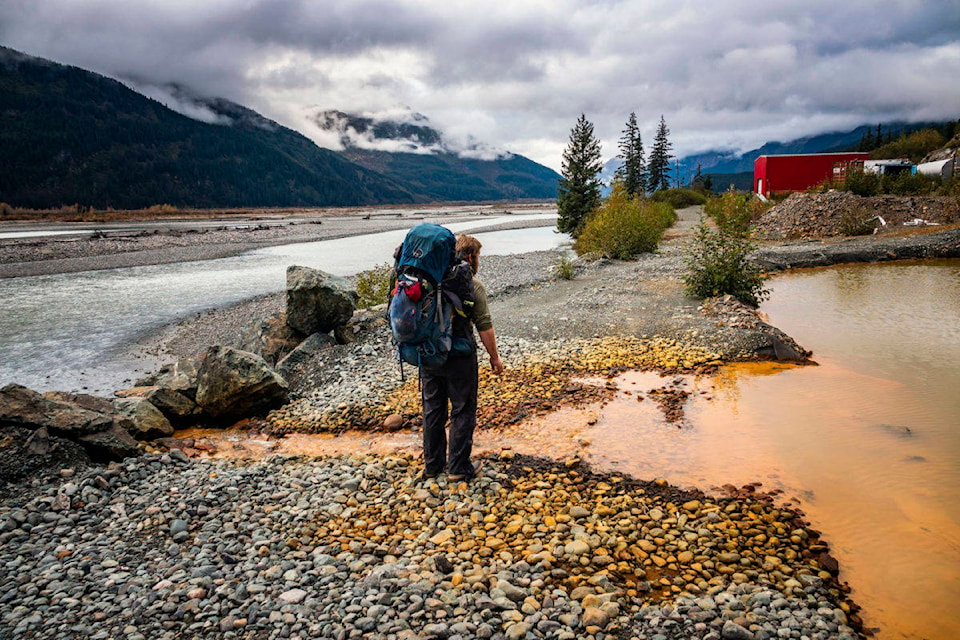The B.C. mining industry has responded to the latest criticism by Alaska state legislators on the provinceB��Ԫ������ַ�s regulation of mining and protection of rivers that flow from northeast B.C. into Alaska waters.
Eight Alaska politicians wrote to B.C. Premier John Horgan in May, warning that the state is watching the decline of chinook and sockeye salmon runs in the Stikine, Taku and Unuk Rivers with alarm, and accusing B.C. of dragging its feet on regulation to require mine reclamation funds to be in place when projects are built. They described the current agreement between Alaska and B.C. as B��Ԫ������ַ�non-bindingB��Ԫ������ַ� and B��Ԫ������ַ�unfunded,B��Ԫ������ַ� and referred to the construction of B��Ԫ������ַ�massive tailings dams at the headwaters of these shared rivers.B��Ԫ������ַ�
Mining Association of B.C. president Michael Goehring released a response this week, saying the Alaska letter and resulting media reports do not paint an accurate picture of B.C.B��Ԫ������ַ�s efforts. He referred to the overhaul of B.C.B��Ԫ������ַ�s Mines Act and reclamation code and creation of independent review boards for mine tailings management, put in place after the collapse of the tailings dam at Mount Polley Mine near Quesnel in 2014.
Goehring pointed to the B.C.-Alaska Transboundary Working Group on Monitoring, with Indigenous communities involved in water sampling, that found B��Ԫ������ַ�overall aquatic conditions of the Taku, Stikine and Unuk trans-boundary rivers currently support and maintain aquatic life.B��Ԫ������ַ�
Goehring acknowledged the need to complete remediation of the abandoned Tulsequah Chief Mine, which has been leaching acid rock drainage in the Taku River system since the 1960s. In July 2020, the B.C. government committed $1.5 million for site preparation and studies to prepare for reclamation of the Tulsequah Chief mine site.
B��Ԫ������ַ�Reclamation and closure of this site is imperative,B��Ԫ������ַ� Goehring said in a letter to the Alaska representatives.
RELATED:
RELATED:
RELATED:
An independent audit of tailings storage facilities (TSFs) B��Ԫ������ַ�compared B.C.B��Ԫ������ַ�s regulatory framework with similar regulations in other mining jurisdictions B��Ԫ������ַ� including Alaska and Montana B��Ԫ������ַ� on 13 elements of TSF management,B��Ԫ������ַ� Goehring wrote. B��Ԫ������ַ�The audit found B.C.B��Ԫ������ַ�s regulator framework for TSFs is among the best in the world.B��Ԫ������ַ�
B.C. has been working with the Tahltan Nation on shared management of the area they call the Sacred Headwaters, a mineral-rich territory where coalbed methane drilling was banned a decade ago and some new mines have been approved.
B.C. has temporarily complied with a demand from Tahltan Central Government president Chad Norman Day to stop issuing permits for placer and jade mining in the territory, and put a stop to a B��Ԫ������ַ�realityB��Ԫ������ַ� TV show called B��Ԫ������ַ�Jade FeverB��Ԫ������ַ� that has run for seven seasons on Discovery Canada, a division of Bell Media.
tfletcher@blackpress.ca
Like us on and follow us on .



